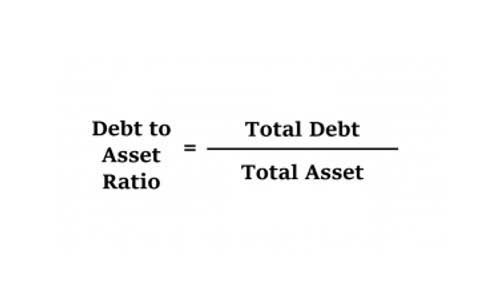What Are Unrestricted Net Assets on the Balance Sheet for Fund Accounting?

It is essential for nonprofits to clearly differentiate between assets with donor restrictions and those without, as this distinction impacts how resources can be utilized. Additionally, the Statement of Activities, similar to an income statement, outlines the organization’s revenues and expenses over a reporting period. This statement must also segregate activities based on the presence or absence of donor restrictions, offering a detailed view of how funds are generated and expended. These assets are not bound by donor-imposed restrictions, allowing management the flexibility to allocate resources where they are most needed. This category includes revenues from general operations, donations without specific stipulations, and investment income. The unrestricted nature of these assets makes them particularly valuable for covering operational expenses, funding new initiatives, or addressing unexpected financial challenges.

New Nonprofits

That is, the assets may be used by the organization for general expenses or any legitimate expenditure. Donors may specify that their contributions be used within a certain period, such as a fiscal year or a multi-year grant cycle. As the designated time frame elapses, the restrictions are lifted, and the funds can be reallocated. This type of release is particularly beneficial for long-term planning, as it provides a predictable timeline for when additional resources will become available. It also allows nonprofits to align their financial strategies with donor expectations, ensuring that funds are utilized in a timely and effective manner. Net assets without donor restrictions (unrestricted net assets) is the balance left in net assets after subtracting restricted net assets.
Net Assets in Nonprofit Organizations
- One of the most critical is the difference between unrestricted net assets and restricted net assets.
- If the money for your receivables isn’t going to be used for everyday operating costs, then subtract it from this number.
- In for-profit entities, equity is generally unrestricted and can be used at the discretion of the company’s management.
- Net assets were formerly presented as unrestricted, temporarily restricted, or permanently restricted.
- In conclusion, unrestricted net assets give companies a great deal of flexibility and opportunity, making them an essential part of any well-run business.
- To increase your organization’s unrestricted net assets, you’ll need to generate more revenue or reduce expenses.
- Once an agreement is in place, nonprofits must implement robust tracking systems to monitor the use of restricted funds.
Fund accounting allows the organization to manage the funds according to each purpose, assuring contributors that their money will serve the purpose for which it was intended. Incorrect or delayed entries can lead to financial discrepancies, complicating audits and potentially undermining donor trust. Nonprofits often use specialized accounting software, such as QuickBooks Nonprofit or Blackbaud Financial Edge, to streamline this process. These tools offer features tailored to the unique needs of nonprofit accounting, including automated journal entries and real-time financial reporting. By leveraging such software, organizations can unrestricted net assets ensure that their financial records are both accurate and up-to-date, facilitating better decision-making and compliance with accounting standards. Learn how nonprofits manage net assets released from restrictions, impacting financial statements and ensuring compliance.

Temporarily restricted net assets
- These assets are typically unrestricted, but don’t contribute to your Readily Available Net Assets.
- If you have any permanently restricted net assets, subtract the corresponding investment balances first.
- Understanding how to handle these funds can significantly impact a nonprofit’s operations and reporting accuracy.
- These assets provide flexibility and serve as a measure of an organization’s financial stability.
- They are important because they provide organizations with the flexibility to respond to unexpected needs or opportunities.
- Another key difference is the limitations non-profits have in deploying their assets compared to a for-profit company.
In the above example, net assets of $100,000 does in fact equal total assets (cash) of $100,000. Beyond that, you may want to track grants, endowments, or large-money funders in funds of their own. That makes it easy for you to run fund-level reports to share with your benefactors. The sum of these three classifications of net assets gives the total net assets for the non-profit.
Nonprofits often receive donations or grants designated for a specific purpose–like a donation to a specific program or grant you have to spend within a calendar year. Through these funds, the organizations can pay off their current expenses as well as look around for other programs or projects that might exist. Nonetheless, the ability to restrict a gift to a nonprofit organization can be a powerful incentive. Another animal-lover may want to be certain that a gift will be used only to rescue cats from kill shelters, and never for mundane administrative purposes. Understanding how to handle these funds can significantly impact a nonprofit’s operations and reporting accuracy.

IRS Form 990 is a template for the creation of the Statement of Financial Position as well as a separate Statement of Activities, which is similar to an income statement. Take our 2-minute survey to find out if outsourced accounting and bookkeeping is a bookkeeping good fit for your organization.
Understanding and Analyzing Net Assets in Financial Statements
- The objective is to present clear and easily readable reports, and not to make the reader work hard to figure it out.
- For instance, an economic downturn might lead to reduced donations, affecting the organization’s net assets.
- Another option is to use endowments or other restricted funds to cover operating expenses.
- One of the fundamental components of nonprofit financial reporting is the Statement of Financial Position, which is akin to a balance sheet in for-profit entities.
These assets are often part of an endowment, where the principal amount is preserved, and only the income generated from it can be used for specific purposes. For example, a donor might establish a scholarship fund where the principal remains intact, and only the interest or investment returns are used to award scholarships each year. The permanent nature of these restrictions means that the organization must manage these assets with a long-term perspective, focusing on sustainable investment strategies to ensure ongoing support for the designated purpose. The stewardship of permanently restricted net assets is a significant responsibility, as it involves balancing the need to generate Partnership Accounting income with the obligation to preserve the principal for future generations. Unrestricted net assets play a crucial role in ensuring fiscal sustainability for organizations across various sectors. These assets represent the financial resources that are not subject to donor-imposed restrictions, allowing organizations to allocate funds flexibly and address emerging needs.
